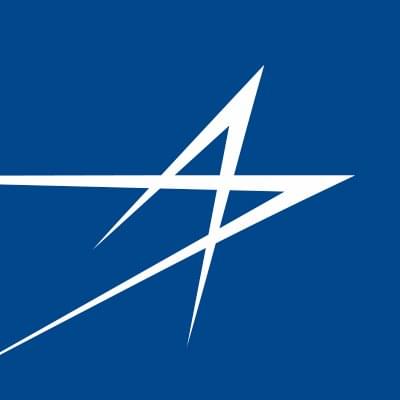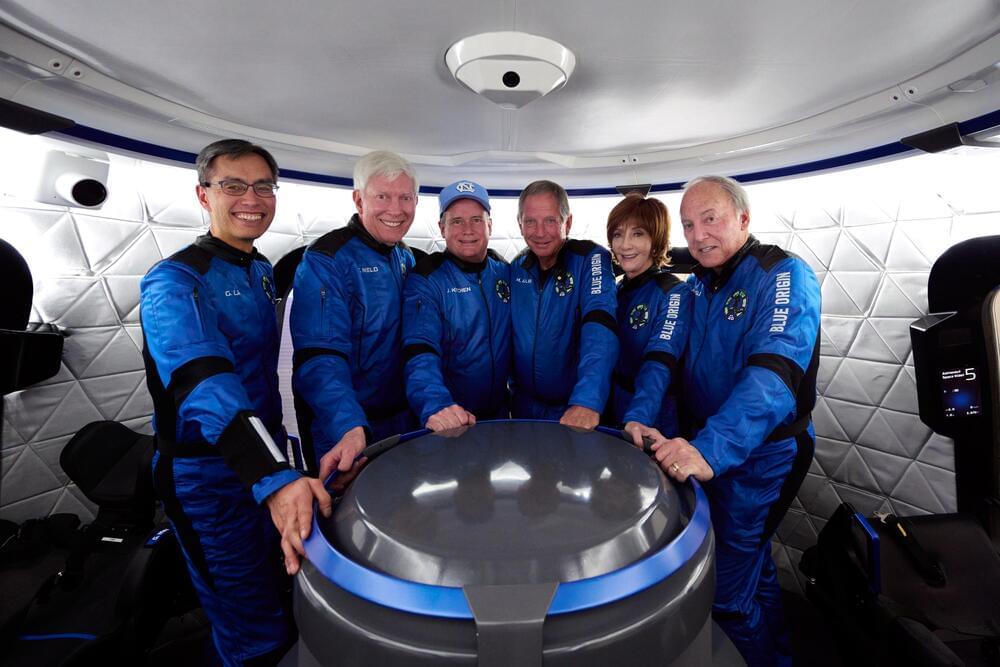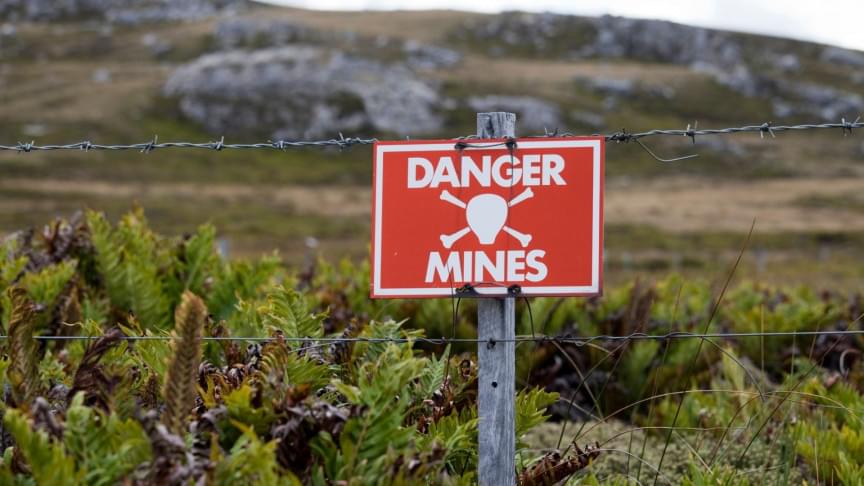
Get the latest international news and world events from around the world.


James Webb Space Telescope completes another stage of instrument alignment
There’s only one step left to tackle.
The commissioning stages of the James Webb Space Telescope just ticked off yet another phase.
Engineers have successfully aligned all but one of the instruments on the $10 billion space telescope for the first time, NASA reported on Friday (April 1) as Webb continues to cool to deep-space temperatures after launching Dec. 25, 2021.

A recent study published in Nature Genetics identified 10 new genetic regions associated with Brugada syndrome
a cardiac arrhythmia disorder associated with sudden death in young adults.
The findings expand possibilities for predictive risk scoring and provide new targets for therapeutic study, according to Alfred George, Jr., MD, chair and the Alfred Newton Richards Professor of Pharmacology and a co-author of the study.
“Prior to this work, there were only two genomic regions associated with Brugada syndrome risk that were identified by genome-wide studies. Data from the new study greatly expands this to 12 regions with a total of 21 genetic signals to better explain risk for Brugada syndrome,” George said. “The results also provide the basis for a polygenic risk score that can be used to assess risk in individuals.”

Novel Risk Factors for Arrhythmia Uncovered
A recent study published in Nature Genetics identified 10 new genetic regions associated with Brugada syndrome, a cardiac arrhythmia disorder associated with sudden death in young adults.
The findings expand possibilities for predictive risk scoring and provide new targets for therapeutic study, according to Alfred George, Jr., MD, chair and the Alfred Newton Richards Professor of Pharmacology and a co-author of the study.
“Prior to this work, there were only two genomic regions associated with Brugada syndrome risk that were identified by genome-wide studies. Data from the new study greatly expands this to 12 regions with a total of 21 genetic signals to better explain risk for Brugada syndrome,” George said. “The results also provide the basis for a polygenic risk score that can be used to assess risk in individuals.”

Salton Sea Unit
The U.S. still imports lithium from other countries like Argentina, Chile, Russia, and China. Geothermal energy has long been the forgotten member of the clean energy family, overshadowed by relatively cheaper solar and wind power, despite its proven potential. But this may soon change – for an unexpected reason.
DWR’s Salton Sea Unit supports the California Natural Resources Agency’s Salton Sea Management Program (SSMP), created by then-Gov. Jerry Brown’s Salton Sea Task Force to address the urgent public and ecological health issues resulting from the drying and shrinking of the Salton Sea. The issues include air quality impacts from dust emissions and loss of important wildlife habitat.
While the SSMP is a long-range program, its immediate focus is on the development and implementation of the Phase I: 10-Year Plan. We support the SSMP and the Phase I Plan by providing planning, engineering, and environmental expertise for design and implementation of dust-suppression and habitat projects. The Phase I Plan includes projects that will be completed as early as the end of 2022. Proposition 1 provided $80 million in funding for SSMP implementation.
Transporter-4 Mission
Including one long-awaited and colossal German satellite. It’s never too late to join the party when you’re headed to space.
On Friday, April 1 at 12:24 p.m. ET, Falcon 9 launched Transporter-4, SpaceX’s fourth dedicated smallsat rideshare program mission, from Space Launch Complex 40 at Cape Canaveral Space Force Station in Florida. This was the seventh launch and landing of this Falcon 9 stage booster, which previously supported launch of Crew-1, Crew-2, SXM-8, CRS-23, IXPE, and one Starlink mission. Following stage separation, Falcon 9’s first stage landed on the Just Read the Instructions droneship, which was stationed in the Atlantic Ocean.
On board this flight were 40 spacecraft, including CubeSats, microsats, picosats, non-deploying hosted payloads, and an orbital transfer vehicle carrying spacecraft to be deployed at a later time.

SB>1 DEFIANT Helicopter Completes Long-Endurance Flight to Nashville
Will it be the next Black Hawk?
NASHVILLE March 31, 2022 — After three years of proving its transformational flight capabilities, the Lockheed Martin Sikorsky-Boeing SB1 DEFIANT® helicopter arrived in Nashville this week to give U.S. Army Aviators a first-hand look at this impressive aircraft at the Army Aviation Association of America’s annual summit.
Army aviators at the summit will be able to see how Team DEFIANT is revolutionizing Future Vertical Lift, one of the Army’s top modernization priorities, with a focus on transforming the Future Long-Range Assault Aircraft program’s capabilities, production and sustainment resulting in lower-life cycle costs. The result is DEFIANT X® a complete weapon system that builds on the handling qualities and capabilities proven by the team’s technology demonstrator, SB1 DEFIANT®.
“When Sikorsky and Boeing embarked on the DEFIANT journey, we were mission focused and thinking ahead to creating a holistic weapon system that would give America’s Soldiers a strategic advantage to deter and defeat threats well into the 21st century,” said Sikorsky President Paul Lemmo. “DEFIANT ensures our aviators are confident and prepared for what’s ahead and gives them the agility to adapt to evolving threats.”

Blue Origin Successfully Completes Fourth Human Spaceflight
No celebrities flew to space after SNL’s Pete Davidson pulled out. Blue Origin completed its fourth crewed spaceflight, taking six passengers up into suborbital space.
According to conspiracy theorists, this popular Air Force testing facility is a secret research center for studying alien technology. So what’s the truth and why did people want to raid Area 51 back in 2019?

The Real Minesweepers Are Changing Lives and Saving Limbs
And it could mean signs of the war will remain for a long time. Reports are in that Russian forces are laying “smart” landmines in Ukraine that are only able to target soldiers. Called the POM-3 “Medallion” landmine, these anti-personal weapons are activated, allegedly, specialist seismic target sensors.
Once the conflict ends, it is important to begin the process of “demining.” The goal is to clear the land of any explosive devices that pose a risk to the population. Currently, there are an estimated 110 million landmines scattered across dozens of war-torn countries, and approximately 26,000 people per year (or roughly 70 people per day) die due to these devices.
Many die while trying to collect parts of the metal mines for scrap, or by accidentally triggering the mines. Here’s a look at a few different technologies, both old and new, that are working to clear affected areas of these destructive weapons.
1. Metal detectors
Probably the oldest and most remedial manner in which we locate landmines is through the use of metal detectors. The effectiveness varies according to the depth the landmine was buried at, what materials it is comprised of, and the type of soil. Most devices contain enough metal for metal detectors to pick up, but it’s far from foolproof.

Metaverse will become a $1 trillion market opportunity, says JP Morgan
And tells us how to get there. With a stream of big names revealing their intent to be a part of this upcoming digital world, the metaverse could be a $13 trillion industry by 2030, Citi Bank said in its report.
JP Morgan Chase has become the first bank in the world to set up shop in the metaverse. Its new office is located in the Metajuku Mall in Decentraland, a popular platform for buying real estate in the digital realm, Fortune reported.
Even as technology giants such as Meta and Microsoft are figuring out ways in which they want to build up their versions of the metaverse, real estate in other metaverse platforms are selling like hotcakes. 2021 was the best year in terms of sales valuation for metaverse so far and the numbers are expected to double in 2022. Interestingly, this is all playing out on platforms like Decentraland and Sandbox and JP Morgan wants in.
A potential market of trillion-dollars a year
About six months ago, JP Morgan flipped its stance about cryptocurrencies and gave its clients the opportunity to dive into crypto products. The company’s outlook has definitely broadened as it is now investing in the metaverse, much ahead of its peers.